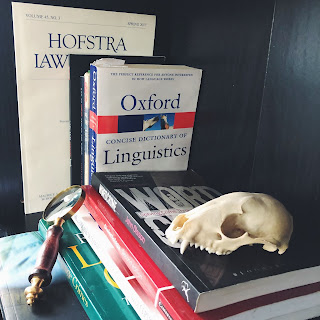Not Wrong, Just Not Standard!
There are two types of people: descriptivists and prescriptivists. Especially when it comes to grammar. Most linguists are descriptivists. Your high school grammar teacher was a prescriptivist. A linguistic prescriptivist believes that language use works on a scale of "correct" to "incorrect" based on adherence to a prescribed set of rules. A linguistic descriptivist believes that language users are the writers of those rules, and they are satisfied to describe the rules those users seem to agree on. I'm going to describe and compare descriptivism and prescriptivism, and it might sound like they're opposing philosophies... but I can't promise that they aren't. In linguistics, the variety of language that most frequently adheres to that language's prescribed rules is called the "standard language." Which variety gets to be the standard depends on each language, country, culture, history, colonialism, and so on. A standard language i...
